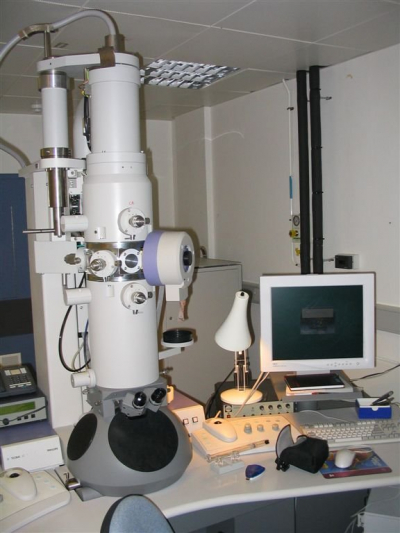Ebola, also known as Ebola virus disease (EVD) and Ebola hemorrhagic fever (EHF), is a viral hemorrhagic fever in humans and other primates, caused by ebolaviruses. Symptoms typically start anywhere between two days and three weeks after becoming infected with the virus. The first symptoms are usually fever, sore throat, muscle pain, and headaches. These are usually followed by vomiting, diarrhoea, rash and decreased liver and kidney function, at which point, some people begin to bleed both internally and externally. The disease kills between 25% and 90% of those infected about 50% on average. Death is often due to shock from fluid loss, and typically occurs between six and 16 days after the first symptoms appear.The virus spreads through direct contact with body fluids, such as blood from infected humans or other animals, or from contact with items that have recently been contaminated with infected body fluids. There have been no documented cases, either in nature or under laboratory conditions, of the disease spreading through the air between humans or other primates. After a person recovers from Ebola, their semen or breast milk may continue to carry the virus for anywhere between several weeks to several months. Fruit bats are believed to be the normal carrier in nature; they are able to spread the virus without being affected by it. The symptoms of Ebola may resemble those of several other diseases, including malaria, cholera, typhoid fever, meningitis and other viral hemorrhagic fevers. Diagnosis is confirmed by testing blood samples for the presence of viral RNA, viral antibodies or the virus itself.Control of outbreaks requires coordinated medical services and community engagement, including rapid detection, contact tracing of those exposed, quick access to laboratory services, care for those infected, and proper disposal of the dead through cremation or burial. Samples of body fluids and tissues from people with the disease should be handled with extreme caution. Prevention measures include wearing proper protective clothing and washing hands when around a person with the disease, and limiting the spread of the disease from infected animals to humans by wearing protective clothing while handling potentially infected bushmeat, and by cooking bushmeat thoroughly before eating it. An Ebola vaccine was approved in the United States in December 2019. While there is no approved treatment for Ebola as of 2019, two treatments (atoltivimab/maftivimab/odesivimab and ansuvimab) are associated with improved outcomes. Supportive efforts also improve outcomes. These include oral rehydration therapy (drinking slightly sweetened and salty water) or giving intravenous fluids, and treating symptoms. In October 2020, Atoltivimab/maftivimab/odesivimab (Inmazeb) was approved for medical use in the United States to treat the disease caused by Zaire ebolavirus.The disease was first identified in 1976, in two simultaneous outbreaks: one in Nzara (a town in South Sudan) and the other in Yambuku (the Democratic Republic of the Congo), a village near the Ebola River, from which the disease takes its name. Ebola outbreaks occur intermittently in tropical regions of sub-Saharan Africa. Between 1976 and 2012, according to the World Health Organization, there were 24 outbreaks of Ebola resulting in a total of 2,387 cases, and 1,590 deaths. The largest Ebola outbreak to date was an epidemic in West Africa from December 2013 to January 2016, with 28,646 cases and 11,323 deaths. On 29 March 2016, it was declared to no longer be an emergency. Other outbreaks in Africa began in the Democratic Republic of the Congo in May 2017, and 2018. In July 2019, the World Health Organization declared the Congo Ebola outbreak a world health emergency.
An electron microscope is a microscope that uses a beam of accelerated electrons as a source of illumination. As the wavelength of an electron can be up to 100,000 times shorter than that of visible light photons, electron microscopes have a higher resolving power than light microscopes and can reveal the structure of smaller objects. A scanning transmission electron microscope has achieved better than 50 pm resolution in annular dark-field imaging mode and magnifications of up to about 10,000,000× whereas most light microscopes are limited by diffraction to about 200 nm resolution and useful magnifications below 2000×.
Electron microscopes use shaped magnetic fields to form electron optical lens systems that are analogous to the glass lenses of an optical light microscope.
Electron microscopes are used to investigate the ultrastructure of a wide range of biological and inorganic specimens including microorganisms, cells, large molecules, biopsy samples, metals, and crystals. Industrially, electron microscopes are often used for quality control and failure analysis. Modern electron microscopes produce electron micrographs using specialized digital cameras and frame grabbers to capture the images.

1976Oct, 13
The first electron micrograph of an Ebola viral particle is obtained by Dr. F. A. Murphy, now at U.C. Davis, who was then working at the C.D.C.
Choose Another Date
Events on 1976
- 5Jan
Democratic Kampuchea
The Khmer Rouge proclaim the Constitution of Democratic Kampuchea. - 13Apr
Thomas Jefferson
The United States Treasury Department reintroduces the two-dollar bill as a Federal Reserve Note on Thomas Jefferson's 233rd birthday as part of the United States Bicentennial celebration. - 8May
Six Flags Magic Mountain
The rollercoaster The New Revolution, the first steel coaster with a vertical loop, opens at Six Flags Magic Mountain. - 11Oct
Gerald R. Ford
George Washington's appointment, posthumously, to the grade of General of the Armies by congressional joint resolution Public Law 94-479 is approved by President Gerald R. Ford. - 13Oct
Ebola
The first electron micrograph of an Ebola viral particle is obtained by Dr. F. A. Murphy, now at U.C. Davis, who was then working at the C.D.C.

 English
English  español
español  français
français  português
português  русский
русский  العربية
العربية  简体中文
简体中文 